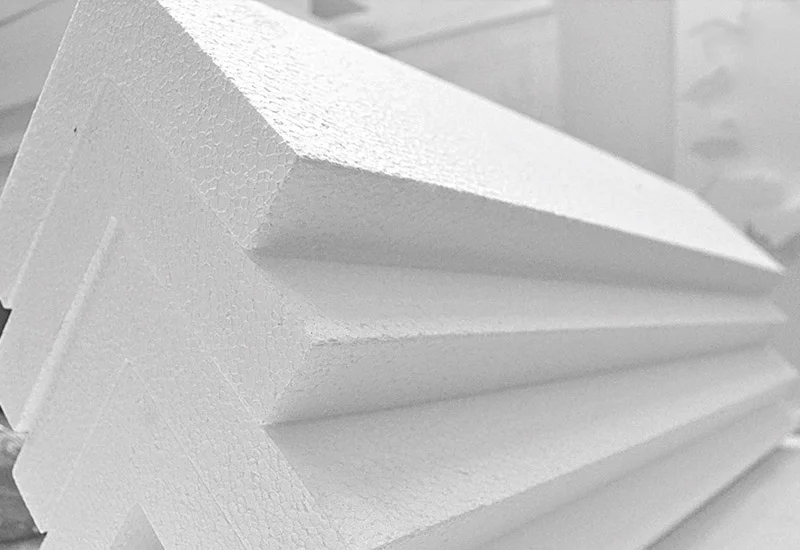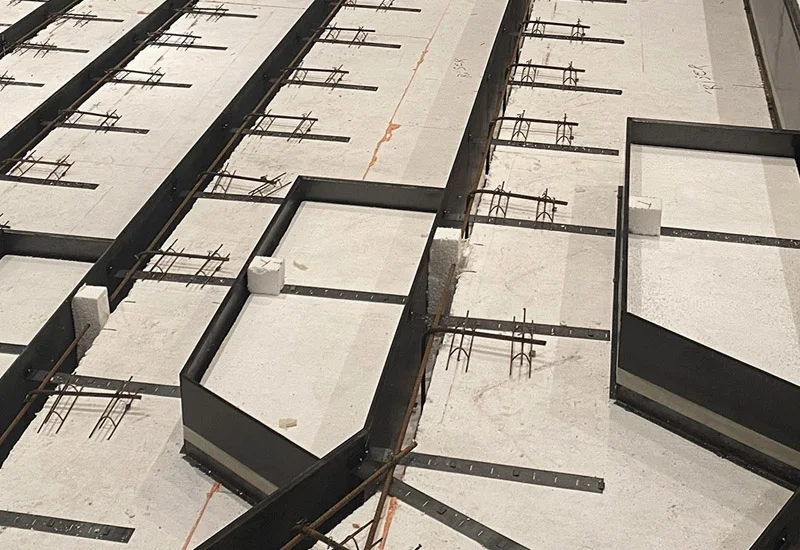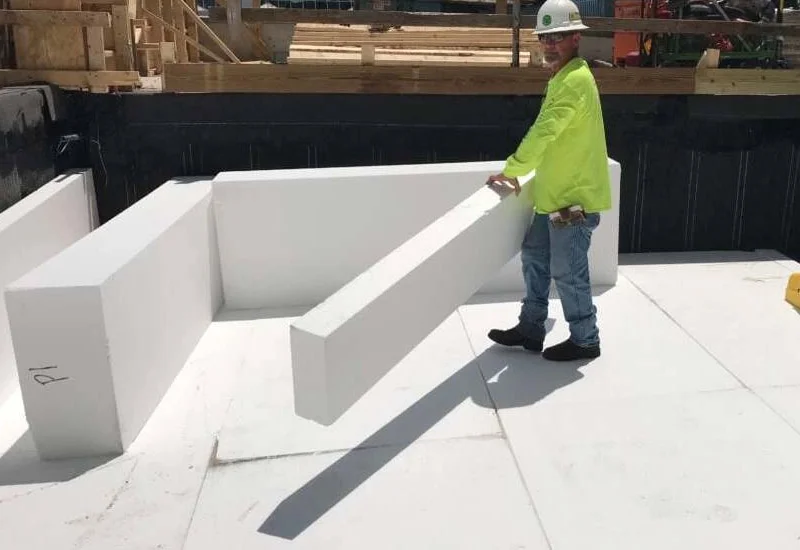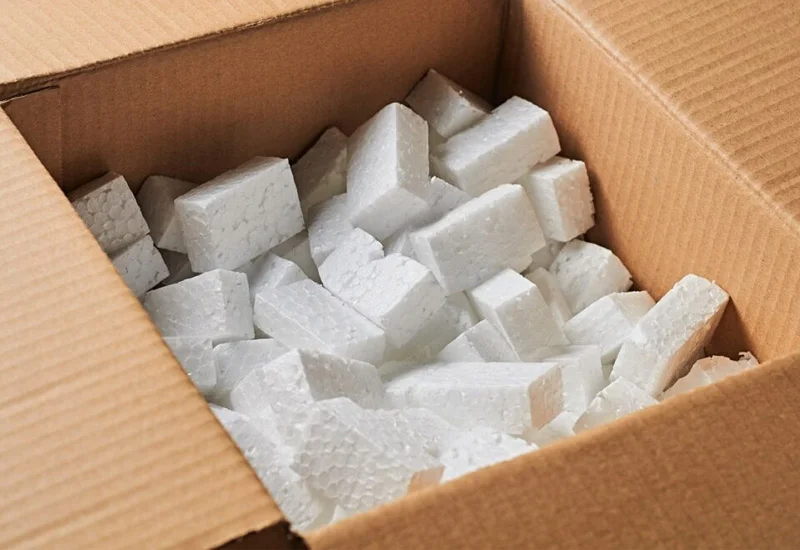Many people wonder whether EPS foam can effectively block noise, leading to the question: Do sound penetrate EPS foam?
In the realm of sound insulation and construction materials, Expanded Polystyrene (EPS) foam has gained significant attention for its versatile properties. Understanding the sound penetration of EPS foam is crucial for various industries, from construction to packaging. This article delves into the intricacies of how sound interacts with EPS foam, its implications, and applications.
What is EPS Foam?

Expanded polystyrene (EPS) foam is a lightweight, rigid, cellular plastic material derived from polystyrene. It is commonly used in packaging, insulation, and construction due to its excellent thermal insulation properties, shock absorption capabilities, and low cost. EPS foam is manufactured by expanding polystyrene beads with steam and then molding them into various shapes and sizes. It is widely recognized for its versatility, durability, and recyclability.
EPS Foam Performance and Application Industries

Expanded Polystyrene (EPS) foam, while primarily known for its thermal insulation and lightweight properties, also offers some sound insulation capabilities.
Here are the key aspects of EPS foam’s sound insulation properties:
Do Sound Penetrate EPS Foam: Sound Insulation Characteristics
Airborne Noise Reduction
EPS foam can reduce airborne noise to some extent due to its closed-cell structure. The material can absorb and scatter sound waves, thereby reducing the amount of sound that passes through it.
It is particularly effective at attenuating high-frequency sounds, such as those from speech or light machinery.
Structural Noise Reduction
EPS foam is less effective at reducing structural or impact noise (such as footsteps or vibrations from heavy machinery). For these types of noise, denser materials or specialized sound-dampening products are typically more effective.
Do Sound Penetrate EPS Foam: Factors Affecting Sound Insulation Performance
Density and Thickness
The sound insulation properties of EPS foam improve with increased density and thickness. Higher-density EPS foam has more mass, which can help block sound transmission.
Thicker EPS panels provide greater attenuation of sound waves by increasing the distance the sound has to travel through the material.
Installation and Configuration
The effectiveness of EPS foam in sound insulation also depends on how it is installed. When used in combination with other materials (such as gypsum board or mass-loaded vinyl), its sound insulation properties can be enhanced.
Gaps and joints in the installation must be properly sealed to prevent sound leakage.
Applications in Sound Insulation
In multi-layer wall systems, EPS foam can be part of a composite solution, working alongside other soundproofing materials to improve overall performance.
EPS foam is used in certain consumer products, such as acoustic panels and ceiling tiles, to provide a degree of sound absorption and improve the acoustic environment in spaces like offices or classrooms.
Limitations
Frequency Range
EPS foam is more effective at insulating against high-frequency sounds than low-frequency sounds.
Do Sound Penetrate EPS Foam: Enhancing EPS Sound Insulation
To improve the sound insulation properties of EPS foam, it can be combined with other materials:
Adding Mass:
Pairing EPS foam with denser materials increases the overall mass, which enhances sound-blocking capabilities.
Damping Layers:
Including damping layers (materials that dissipate vibrational energy) can improve the performance against structural noise.
Multi-layer Systems:
Using EPS foam in conjunction with other insulating materials can create a more effective sound barrier.
In summary, EPS foam offers moderate sound insulation benefits, particularly for high-frequency airborne noise. Its performance can be enhanced through proper installation and by combining it with other materials, making it a useful component in a variety of sound insulation applications, albeit not the most optimal solution for high-demand acoustic environments.
Types of EPS Foam
Virgin EPS:
Made from 100% polystyrene, virgin EPS offers superior insulation properties and is ideal for demanding applications.
EPS Foam production machine
Recycled EPS:
Produced from post-consumer and post-industrial recycled polystyrene, recycled EPS offers a sustainable alternative without compromising performance.
Categories Based on Density
High-Density EPS:

With a higher density and compression strength, high-density EPS is suitable for load-bearing applications such as construction and packaging.
Low-Density EPS:

Characterized by its lightweight nature, low-density EPS is commonly used in insulation, arts and crafts, and protective packaging.
Do sound penetrate EPS foam? I think the above article paragraph has made it very clear. In addition, what other characteristics does EPS Foam have?
Thermal Insulation
EPS foam has exceptional thermal insulation properties, making it ideal for use in building insulation, coolers, and refrigeration. Its closed-cell structure minimizes thermal conductivity, reducing heat transfer and helping maintain desired temperatures.
Mechanical Strength
EPS foam exhibits good mechanical strength and rigidity. It can absorb and dissipate energy effectively, providing cushioning and shock absorption. This makes it suitable for packaging fragile items, as well as for use in construction where lightweight yet sturdy materials are needed.
Lightweight
One of the most significant advantages of EPS foam is its low density, which results in a very lightweight material. This characteristic is crucial for applications where weight reduction is essential, such as in packaging, transportation, and construction.
Moisture Resistance
EPS foam is resistant to moisture and water vapor, which prevents it from degrading in wet conditions. This property makes it suitable for use in damp environments, such as insulation for foundations and walls.
Cost-Effectiveness
EPS foam is relatively inexpensive to produce and process. Its cost-effectiveness, combined with its other performance benefits, makes it a popular choice for many commercial and industrial applications.
Versatility
EPS foam can be easily molded and shaped into various forms, enabling its use in a wide range of products and applications, from simple packaging peanuts to complex architectural elements.
Environmental Impact
While EPS foam is not biodegradable, it is recyclable. Advances in recycling technology have improved the ability to reprocess EPS foam into new products, reducing its environmental footprint. Additionally, its insulating properties can contribute to energy savings, which is beneficial for the environment.
Fire Resistance
EPS foam can be manufactured with fire retardants to improve its resistance to ignition and reduce the spread of flames. However, it is important to use EPS foam appropriately and in conjunction with other fire safety measures.
Durability
EPS foam is durable and retains its properties over time. It is resistant to aging, which means it can maintain its performance characteristics throughout its lifecycle, making it a reliable material for long-term applications.
FAQs
Do sound penetrate EPS foam?
EPS foam can reduce sound penetration to some extent, particularly high-frequency airborne noise, but it is less effective against low-frequency and structural noise.
Do sound penetrate EPS foam effectively?
EPS foam provides moderate sound insulation, primarily effective for high-frequency sounds. Its performance can be improved by increasing density and thickness.
Do sound penetrate EPS foam in soundproofing applications?
EPS foam can be used in soundproofing, but it is often combined with other materials for more effective sound insulation solutions.
Do sound penetrate EPS foam depending on its properties?
The sound insulation properties of EPS foam depend on its density, thickness, and the quality of installation.
Do sound penetrate EPS foam in high-demand acoustic environments?
EPS foam alone may not be sufficient for high-demand acoustic environments, but it can be part of a composite soundproofing system to enhance overall performance.
Conclusion
In summary, while EPS foam provides moderate sound insulation capabilities, particularly for high-frequency airborne noise, its effectiveness varies depending on factors like density, thickness, and installation methods. Combining EPS foam with other materials can enhance its performance in sound insulation applications. Therefore, the question, “Do sound penetrate EPS foam?” is complex. While EPS foam can attenuate sound to some extent, it may not suffice for high-demand acoustic environments.
Nonetheless, its versatility, cost-effectiveness, and additional benefits such as thermal insulation, lightweight nature, and durability make EPS foam a valuable resource in various industries, from construction to packaging.

-1-300x300.webp)